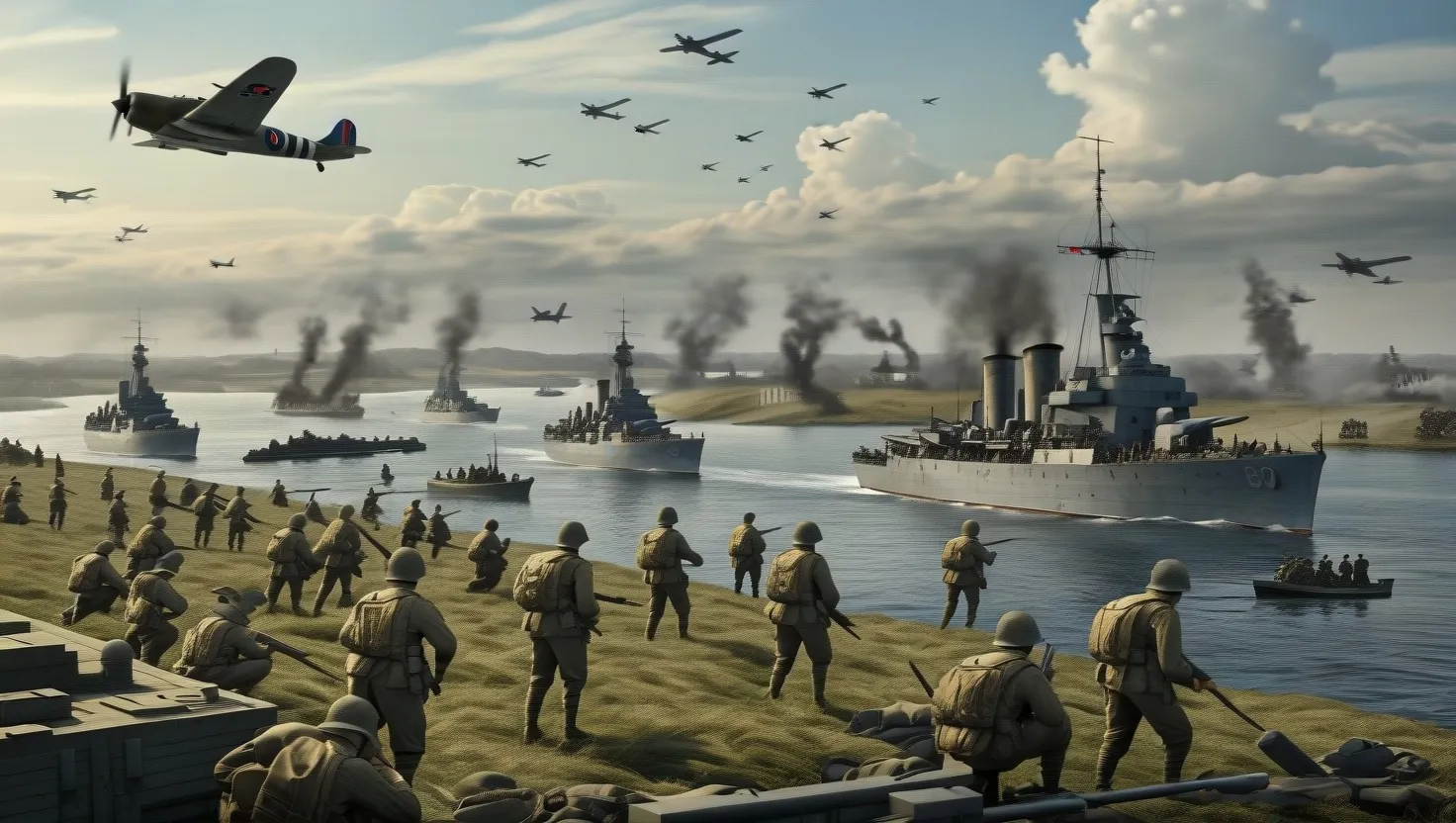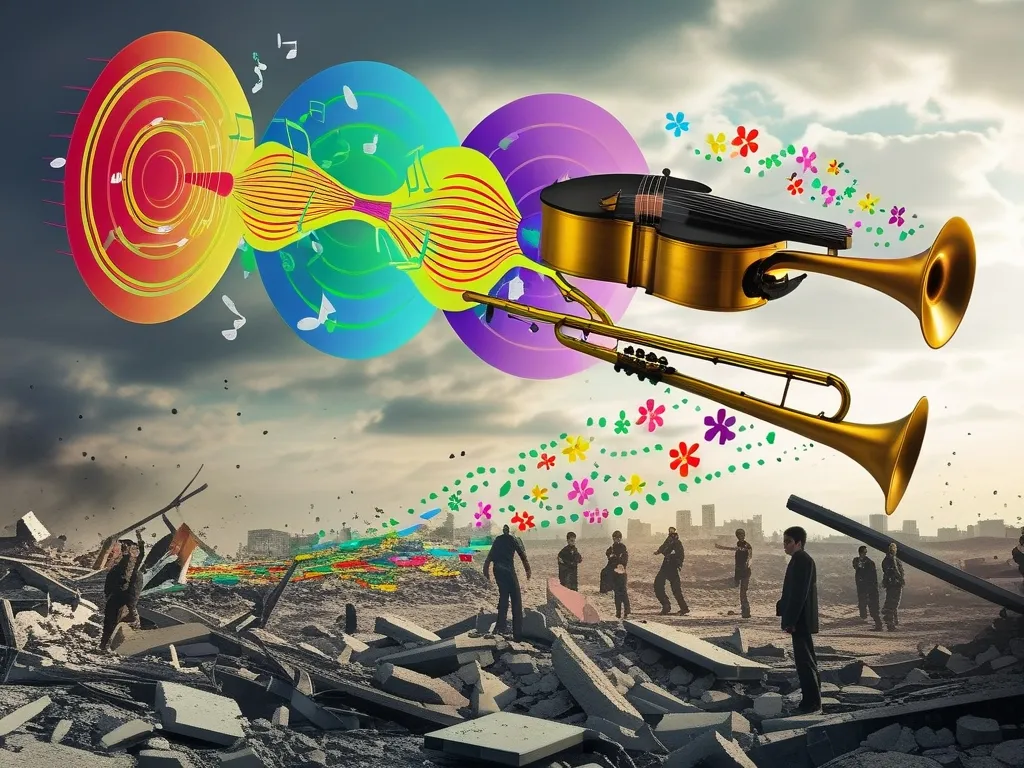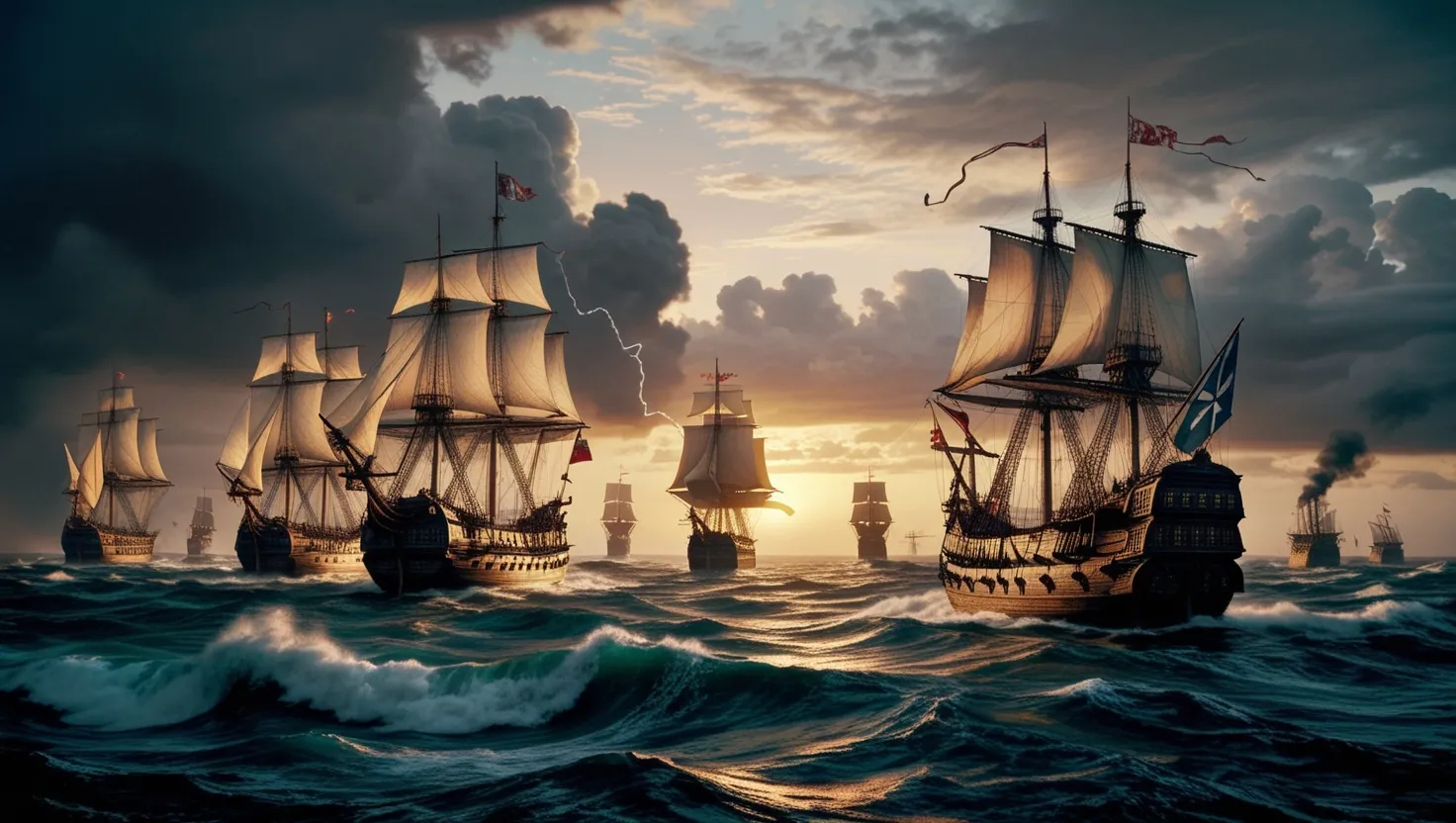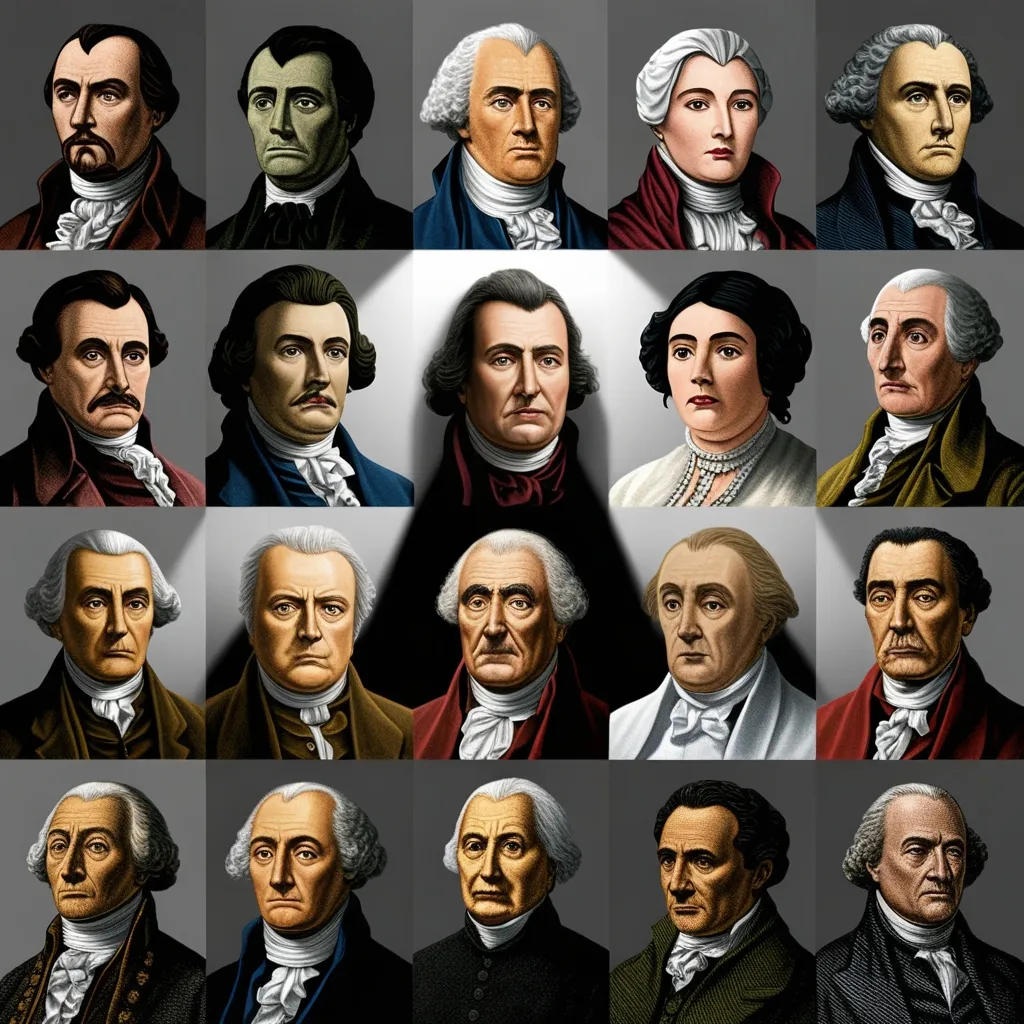As I reflect on the tumultuous landscape of World War II, it becomes clear that certain moments stood out as pivotal, each one a turning point that reshaped the course of the war and, by extension, the world. These events, often marked by intense battles, strategic miscalculations, and groundbreaking innovations, highlight the complex interplay of human decisions, technological advancements, and sheer perseverance that defined this global conflict.
The Battle of Midway: A Pacific Pivot
Imagine the vast expanse of the Pacific Ocean, a stage for one of the most decisive naval battles in history. The Battle of Midway, which began on June 3, 1942, was a clash that would forever alter the balance of power in the Pacific. The Japanese, fresh from their surprise attack on Pearl Harbor, were on a roll, their naval superiority seemingly unchallenged. However, at Midway, the tide began to turn.
American forces, armed with crucial intelligence about Japanese plans, prepared an ambush. Over four days, the battle raged, with American aircraft sinking four Japanese aircraft carriers, a blow from which the Japanese navy would never fully recover. This victory marked the end of Japan’s ability to wage an offensive war, forcing them onto the defensive. It was a moment of profound significance, as it halted the Japanese expansion and set the stage for the long, grueling campaign that would eventually lead to the Allied victory in the Pacific.
Operation Barbarossa: Hitler’s Fateful Mistake
In the early summer of 1941, Hitler launched Operation Barbarossa, an invasion of the Soviet Union that would prove to be one of the most catastrophic decisions of the war. Driven by a mix of ideological fervor and a desire for Lebensraum, or “living space,” Hitler believed that a quick victory over the Soviet Union was within his grasp. He underestimated the resilience of the Soviet people and the vastness of the Russian landscape.
The initial successes of the German army were stunning, with deep incursions into Soviet territory and the capture of key cities. However, the Soviet Union was not Poland or France; it was a behemoth that absorbed the German blows and then counterattacked with ferocity. The harsh Russian winter, combined with the logistical nightmares of fighting on such a vast front, slowly ground the German army to a halt. By the end of 1941, the German advance had stalled, and the Soviet counteroffensive had begun, marking the beginning of the end for Nazi Germany’s eastern ambitions.
The Battle of Stalingrad: A Turning Point on the Eastern Front
Stalingrad, a city on the Volga River, became the epicenter of one of the most brutal battles in human history. The German army, still reeling from the failure of Operation Barbarossa, launched a final bid to capture this strategic city in the summer of 1942. What ensued was a battle of unimaginable ferocity, with both sides suffering staggering losses.
The Soviet defense was tenacious, and despite being encircled by German forces, they managed to hold on. The turning point came in February 1943, when the Soviet army launched a counterattack that trapped the German Sixth Army, leading to its eventual surrender. This defeat was a watershed moment; it marked the first major defeat of the German army on the Eastern Front and signaled the beginning of the Soviet advance that would eventually lead to the capture of Berlin.
D-Day: The Normandy Invasion
June 6, 1944, is etched in history as D-Day, the day when Allied forces landed on the beaches of Normandy in one of the most daring military operations ever conceived. The invasion, code-named Operation Overlord, was the culmination of months of planning and preparation. It was a moment of high stakes, as the success of the invasion would determine whether the Allies could establish a foothold in Europe and begin the push to liberate the continent from Nazi occupation.
The landing was a chaotic and bloody affair, with thousands of soldiers facing withering fire from German defenses. However, the sheer scale of the operation and the bravery of the troops eventually broke through the German lines. The establishment of a Western Front accelerated the liberation of Europe, forcing Germany to fight on two fronts and setting the stage for the final push into Germany.
The Manhattan Project: The Atomic Age Dawns
In the deserts of New Mexico, a secret project was underway that would change the world forever. The Manhattan Project, a collaborative effort between American, British, and Canadian scientists, aimed to develop an atomic bomb. This was not just a military project but a scientific and technological leap that would usher in the nuclear age.
The first atomic bomb was tested in July 1945, and shortly thereafter, bombs were dropped on Hiroshima and Nagasaki. The devastating impact of these bombs hastened Japan’s surrender, bringing an abrupt end to the war in the Pacific. The atomic bomb was more than just a weapon; it was a symbol of the new era of global politics, one marked by the threat of mutual destruction and the delicate balance of nuclear deterrence.
The Human Element
These pivotal moments were not just about battles and bombs; they were about people. The soldiers who fought at Midway, Stalingrad, and Normandy were ordinary men thrust into extraordinary circumstances. Their bravery, sacrifice, and resilience were the backbone of the war effort. The scientists working on the Manhattan Project were driven by a mix of curiosity and urgency, their work a testament to human ingenuity.
The war also highlighted the darker aspects of human nature – the atrocities committed during Operation Barbarossa, the horrors of the Holocaust, and the indiscriminate slaughter caused by the atomic bombs. These events serve as a stark reminder of the devastating consequences of conflict and the importance of striving for peace.
Lasting Impact
The consequences of these pivotal moments continue to shape our world today. The Cold War, which followed World War II, was a direct result of the new global order established by the war’s outcome. The nuclear age, ushered in by the Manhattan Project, has defined international relations for decades, with the threat of nuclear war hanging over global politics like a shadow.
The lessons learned from these events – the importance of strategic planning, the role of technology in warfare, and the human cost of conflict – remain relevant. As we navigate the complexities of modern geopolitics, it is crucial to remember these moments, not just as historical events but as cautionary tales that remind us of the importance of diplomacy, cooperation, and the avoidance of conflict whenever possible.
In the end, World War II was a war of contrasts – of heroism and horror, of innovation and destruction. The pivotal moments that defined its course serve as a reminder of the profound impact that human decisions and technological advancements can have on the world. As we look to the future, it is these lessons that we must carry with us, ensuring that the sacrifices of the past are not forgotten and that the world continues to move towards a more peaceful and stable future.






